General
Captivating Title: Interior and Exterior Design Ideas for Wellness Retreats
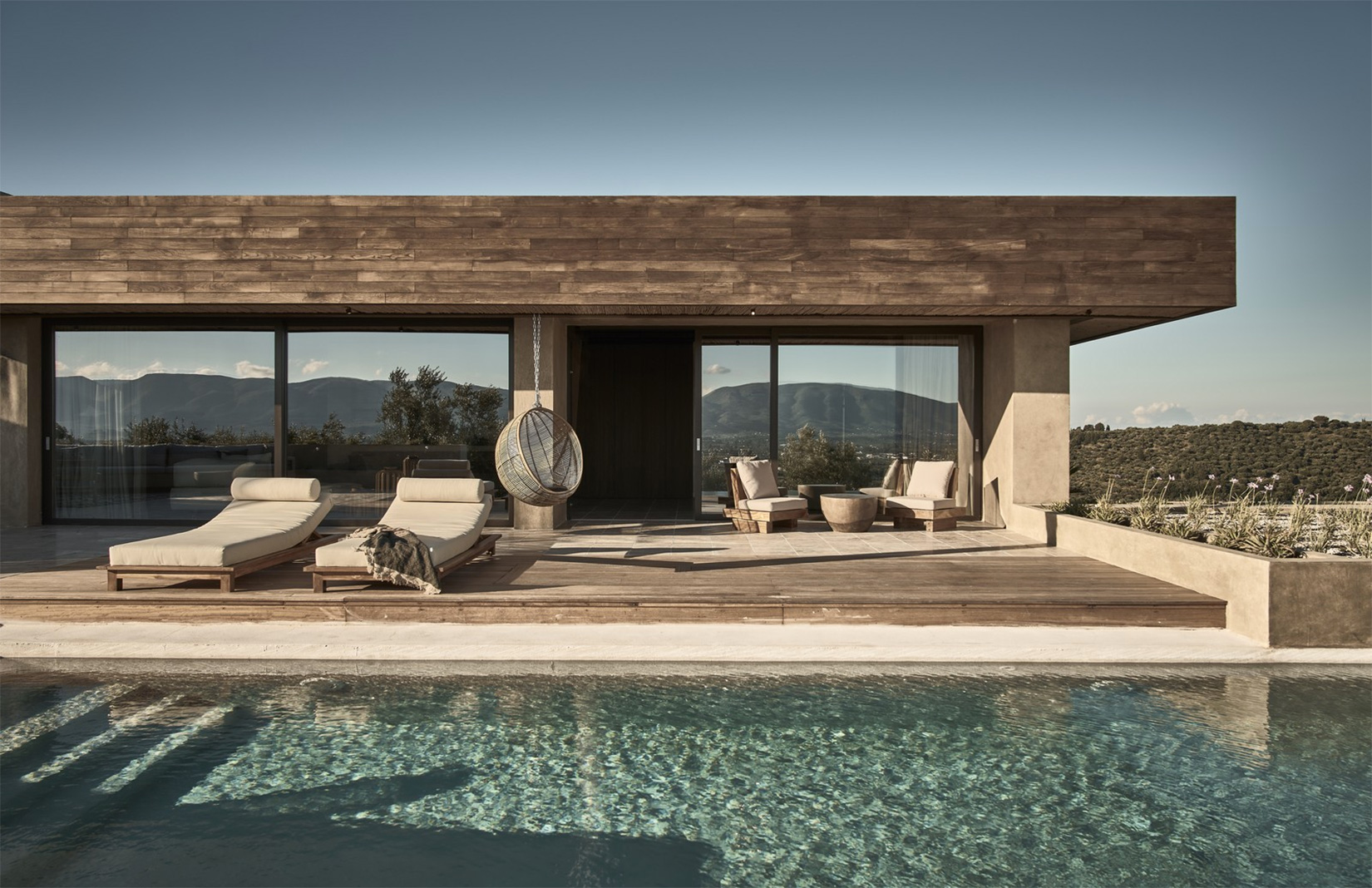
Exploring the world of interior and exterior design ideas for wellness retreats, this introduction aims to captivate readers with a unique and engaging narrative that delves into the importance of creating serene and relaxing spaces. From calming colors to natural elements, the discussion will provide valuable insights for those looking to design wellness retreats that promote well-being and tranquility.
In the following paragraphs, we will dive deeper into specific design elements and practices that can elevate the overall experience of wellness retreat guests.
Interior Design Ideas for Wellness Retreats

In the realm of creating serene and calming spaces for wellness retreats, interior design plays a crucial role in promoting relaxation and rejuvenation for guests seeking a retreat from the hustle and bustle of daily life.
Use of Calming Colors
When it comes to interior design for wellness retreats, the use of calming colors is essential in setting the tone for a peaceful environment. Soft hues such as pastel blues, greens, and earth tones are often preferred for their soothing and restorative properties.
These colors help create a sense of tranquility and promote relaxation among guests looking to unwind and recharge.
Natural Materials for Serene Ambiance
Incorporating natural materials into the interior design of wellness retreat spaces can enhance the overall ambiance and promote a connection to nature. Examples of natural materials that can be used include wood, stone, bamboo, and rattan. These materials not only add a touch of organic beauty to the space but also contribute to a sense of grounding and harmony with the natural surroundings.
Importance of Lighting
Lighting plays a crucial role in creating a relaxing atmosphere within wellness retreat spaces. Soft, diffused lighting can help to create a sense of warmth and intimacy, while natural light sources such as large windows or skylights can bring the outdoors in and promote a feeling of openness and airiness.
Additionally, the use of dimmable lights and candles can further enhance the calming ambiance, allowing guests to adjust the lighting to suit their preferences and mood.
Exterior Design Ideas for Wellness Retreats
Creating a serene and inviting exterior design is essential for wellness retreats as it sets the tone for a peaceful and rejuvenating experience for guests. Here are some key ideas to consider:
Landscaping for Enhanced Ambiance
Landscaping plays a crucial role in enhancing the overall exterior design of a wellness retreat. By incorporating elements such as lush greenery, colorful flowers, and well-maintained pathways, you can create a tranquil and harmonious environment that promotes relaxation and well-being.
Outdoor Spaces for Meditation and Relaxation
Utilizing outdoor spaces for meditation and relaxation can offer guests a unique opportunity to connect with nature and find inner peace. Designating specific areas with comfortable seating, calming sounds of nature, and panoramic views can create a serene atmosphere perfect for mindfulness practices and unwinding.
Integration of Natural Elements
Integrating natural elements like water features, such as fountains or ponds, and gardens can further enhance the holistic experience of a wellness retreat. The soothing sound of flowing water, the vibrant colors of blooming flowers, and the fresh scents of herbs can create a sensory-rich environment that promotes tranquility and rejuvenation.
Sustainable Design Practices for Wellness Retreats
When it comes to creating wellness retreats, incorporating sustainable design practices is essential not only for the environment but also for the well-being of guests. By utilizing eco-friendly materials, embracing biophilic design, and focusing on green spaces, wellness retreats can provide a harmonious and rejuvenating experience for visitors.
Eco-Friendly Materials and Construction Techniques
Utilizing eco-friendly materials in the construction of wellness retreat buildings can significantly reduce the environmental impact of the project. Materials such as reclaimed wood, bamboo, recycled glass, and low-VOC paints are not only sustainable but also contribute to a healthier indoor environment for guests.
Additionally, implementing passive design techniques like natural ventilation and daylighting can further enhance the energy efficiency of the retreat.
Benefits of Green Spaces and Biophilic Design
Incorporating green spaces and biophilic design elements in wellness retreats can have a profound impact on the overall well-being of guests. Green spaces such as gardens, courtyards, and living walls provide opportunities for relaxation, meditation, and connection with nature. Biophilic design, which focuses on integrating natural elements into the built environment, has been shown to reduce stress, improve cognitive function, and enhance overall mood and well-being.
Contribution to Guest Well-Being
By making sustainable design choices in wellness retreats, not only are we reducing our carbon footprint and promoting environmental stewardship, but we are also creating spaces that prioritize the health and well-being of guests. From improved indoor air quality to enhanced natural light and views of greenery, sustainable design practices can contribute to a holistic and rejuvenating experience for visitors, promoting relaxation, rejuvenation, and overall wellness.
Wellness-Focused Amenities and Features

When designing wellness retreats, it is crucial to create spaces that promote relaxation, rejuvenation, and overall well-being for guests. Incorporating wellness-focused amenities and features such as spa facilities, yoga studios, meditation spaces, and guest accommodations that prioritize privacy and tranquility can enhance the overall experience for visitors.
Spa Facilities for Ultimate Relaxation
Spa facilities play a vital role in providing guests with a sanctuary for relaxation and rejuvenation. Designing spa spaces with calming colors, natural materials, and soothing lighting can create a serene atmosphere. Including features such as massage rooms, hydrotherapy pools, saunas, and relaxation lounges can offer a range of therapeutic experiences for guests to unwind and de-stress.
Innovative Yoga Studios and Meditation Spaces
Integrating yoga studios and meditation spaces within wellness retreats allows guests to connect with their inner selves and practice mindfulness. Designing these spaces with ample natural light, peaceful views of nature, and soundproofing to minimize distractions can enhance the overall experience.
Incorporating elements like yoga props, meditation cushions, and calming color palettes can create a harmonious environment for spiritual practices.
Importance of Privacy and Tranquility in Guest Accommodations
Guest accommodations at wellness retreats should prioritize privacy and tranquility to ensure a restful stay for visitors. Designing guest rooms with soundproofing, private outdoor spaces, and serene interior decor can create a peaceful retreat for guests to relax and recharge.
Incorporating amenities like plush bedding, organic toiletries, and wellness-inspired art can enhance the overall sense of well-being for guests during their stay.
Concluding Remarks

In conclusion, the fusion of interior and exterior design ideas plays a crucial role in shaping the ambiance and atmosphere of wellness retreats. By incorporating sustainable practices and wellness-focused amenities, these spaces can offer a sanctuary for relaxation and rejuvenation.
Q&A
What are some popular calming colors used in interior design for wellness retreats?
Soft blues, muted greens, and earthy tones like beige and taupe are commonly used to create a tranquil atmosphere in wellness retreat spaces.
How can landscaping enhance the exterior design of a wellness retreat?
Landscaping can add natural beauty, create a sense of serenity, and provide opportunities for outdoor activities and relaxation, enhancing the overall ambiance of a wellness retreat.
What are some eco-friendly materials suitable for construction in wellness retreat buildings?
Materials like reclaimed wood, bamboo, cork, and recycled glass are eco-friendly options that can be used in the construction of wellness retreat buildings to promote sustainability.
Why is privacy important in the layout and design of guest accommodations at wellness retreats?
Privacy ensures that guests can fully relax and unwind without distractions, contributing to their overall well-being and enhancing the retreat experience.
General
Exploring the Beauty of Hardie Cobblestone
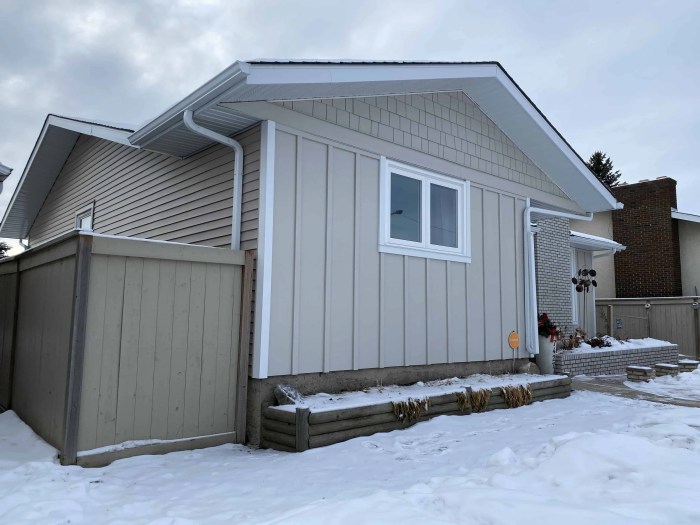
Introducing the versatile material of Hardie Cobblestone, this paragraph aims to intrigue and inform readers about its unique characteristics and wide range of applications in construction.
As we delve deeper into the topic, you will discover the benefits, installation process, maintenance tips, and more about Hardie Cobblestone.
Introduction to Hardie Cobblestone
Hardie Cobblestone is a type of durable and versatile building material made by James Hardie. It is designed to replicate the look of traditional cobblestone, offering a classic and timeless aesthetic for various construction projects.
Characteristics of Hardie Cobblestone
- Durable: Hardie Cobblestone is resistant to rotting, warping, and cracking, making it a long-lasting option for exterior applications.
- Authentic Look: It closely resembles the appearance of natural cobblestone, providing a rustic charm to buildings.
- Lightweight: Despite its robust nature, Hardie Cobblestone is lightweight, making it easier to handle and install.
- Low Maintenance: This material requires minimal upkeep, reducing the need for constant repairs or replacements.
Applications of Hardie Cobblestone in Construction
- Exterior Wall Cladding: Hardie Cobblestone can be used to enhance the exterior façade of buildings, adding texture and visual interest.
- Pathways and Walkways: It is ideal for creating charming pathways, walkways, and driveways, giving a classic cobblestone look without the high maintenance.
- Columns and Pillars: Hardie Cobblestone can be applied to columns and pillars to create a timeless architectural feature.
- Landscaping: It can also be used in landscaping projects to border flower beds, create retaining walls, or add decorative elements to outdoor spaces.
Benefits of Hardie Cobblestone
Hardie Cobblestone offers a range of advantages compared to traditional cobblestone options. Its durability, eco-friendliness, and low maintenance requirements make it a popular choice for many homeowners and landscapers.
Durability
- Hardie Cobblestone is made from fiber cement, a material known for its strength and resilience.
- It can withstand harsh weather conditions, including extreme heat, cold, and moisture, without cracking or fading.
- Unlike traditional cobblestone, Hardie Cobblestone does not require sealing or regular maintenance to keep it looking like new.
Environmentally Friendly
- Hardie Cobblestone is made from sustainable and recyclable materials, reducing its environmental impact.
- It does not release harmful chemicals or emissions into the environment, making it a safe choice for both people and nature.
- By choosing Hardie Cobblestone, you can contribute to a more eco-friendly and sustainable landscaping solution.
Installation Process
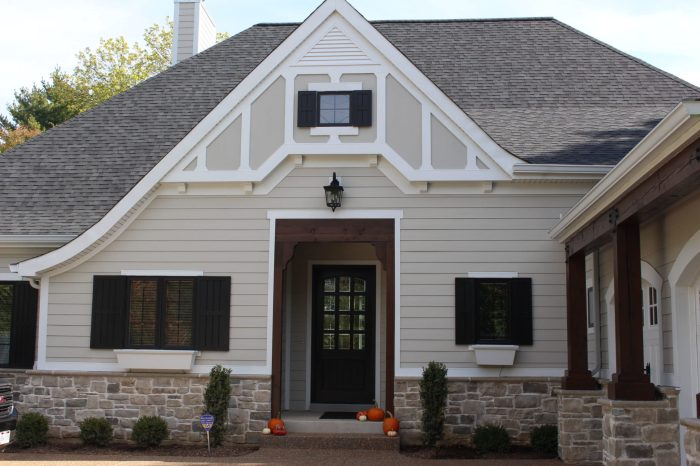
Installing Hardie Cobblestone requires careful preparation and attention to detail to ensure a successful outcome. Below is a step-by-step guide on how to install Hardie Cobblestone, the tools and materials needed, and the importance of proper preparation.
Step-by-Step Guide
To install Hardie Cobblestone:
- Clean the surface where the cobblestones will be installed, ensuring it is free of dirt, debris, and any other contaminants.
- Prepare the area by leveling the ground and compacting it to create a stable base for the cobblestones.
- Begin laying the cobblestones in your desired pattern, making sure to leave space between each stone for grout.
- Secure the cobblestones in place using a suitable adhesive or mortar, following the manufacturer's instructions.
- Fill the gaps between the cobblestones with grout, making sure to remove any excess grout before it dries.
- Allow the installation to dry and cure according to the recommended time frame before walking or driving on the surface.
Tools and Materials Needed
Before starting the installation, you will need the following tools and materials:
- Trowel
- Level
- Rubber mallet
- Grout
- Adhesive or mortar
- Cleaning supplies
- Protective gear
Importance of Proper Preparation
Proper preparation is essential before installing Hardie Cobblestone to ensure a durable and long-lasting finish. By cleaning and leveling the surface, you create a stable base for the cobblestones, preventing shifting or unevenness over time. Additionally, following the recommended installation steps and using the right tools and materials will help you achieve a professional-looking result that enhances the beauty of your outdoor space.
Maintenance and Care
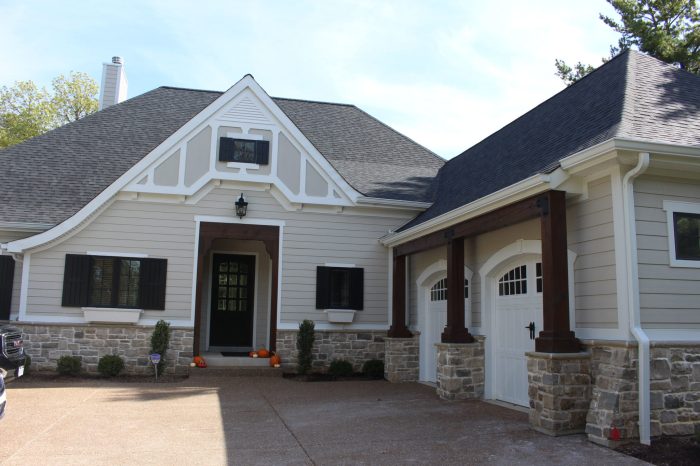
Maintaining your Hardie Cobblestone is essential to ensure its longevity and aesthetic appeal. Proper care can also help prevent costly repairs in the future.To keep your Hardie Cobblestone looking its best, here are some maintenance tips and guidelines:
Cleaning and Preservation
- Regularly sweep or hose down the cobblestones to remove dirt, debris, and leaves.
- Use a mild detergent and water to scrub any stubborn stains or marks on the surface.
- Avoid using harsh chemicals or abrasive cleaners that could damage the cobblestones.
- Consider applying a sealant to protect the surface and enhance the color of the cobblestones.
Common Issues and Solutions
-
Issue:
Cracks or chipping on the cobblestones.
-
Solution:
Fill in the cracks with a suitable patching compound and repaint if necessary to maintain the appearance.
-
Issue:
Moss or algae growth on the surface.
-
Solution:
Use a mixture of water and bleach to clean and inhibit further growth of moss or algae.
-
Issue:
Fading or discoloration over time.
-
Solution:
Apply a UV-resistant sealant to protect the cobblestones from sun exposure and maintain their color.
Wrap-Up

In conclusion, Hardie Cobblestone emerges as a durable, environmentally friendly option for various construction projects, offering both aesthetic appeal and practicality.
Query Resolution
Is Hardie Cobblestone suitable for outdoor use?
Yes, Hardie Cobblestone is designed to withstand outdoor conditions and is perfect for pathways, driveways, and more.
How does Hardie Cobblestone compare to natural cobblestone in terms of durability?
Hardie Cobblestone is known for its exceptional durability, outlasting traditional cobblestone and requiring less maintenance over time.
What are the common maintenance tasks for Hardie Cobblestone?
Regular cleaning and occasional sealing are recommended to preserve the beauty and longevity of Hardie Cobblestone.
General
Exploring the World of Primary Care Physician Online Consultations

With primary care physician online consultations taking center stage, readers are in for an insightful journey into the realm of virtual healthcare. As technology continues to shape the way we access medical care, understanding the significance and benefits of online consultations is crucial.
Delving into the advantages, process, patient experiences, and the future of primary care physician online consultations, this exploration promises to shed light on the evolving landscape of healthcare services.
Overview of Primary Care Physician Online Consultations

Online consultations with primary care physicians have become increasingly popular in recent years, offering patients a convenient and efficient way to access medical care from the comfort of their own homes. This innovative approach to healthcare delivery has revolutionized the traditional doctor-patient interaction and has numerous benefits for both patients and healthcare providers.
Significance of Online Consultations in Primary Care
Online consultations play a crucial role in expanding access to primary care services, especially for individuals with limited mobility, those living in rural areas, or patients with busy schedules. By eliminating the need for in-person visits, online consultations help bridge the gap between patients and healthcare providers, ensuring timely and efficient care delivery.
Benefits of Accessing Primary Care Physicians Online
- Convenience: Patients can consult with their primary care physician from anywhere, at any time, without the need to travel to a physical clinic.
- Time-saving: Online consultations reduce wait times and eliminate the need for long commutes, allowing patients to receive medical advice promptly.
- Cost-effective: Online consultations are often more affordable than in-person visits, as they eliminate transportation costs and time off work.
- Access to specialists: Online consultations can connect patients with specialists or second opinions more easily, ensuring comprehensive care.
- Follow-up care: Patients can easily follow up with their primary care physician online, promoting continuity of care and better health outcomes.
Advantages of Primary Care Physician Online Consultations
Online consultations with primary care physicians offer numerous advantages over traditional in-person visits. These advantages include increased convenience, improved access to healthcare, and more efficient use of time for both patients and healthcare providers.
Convenience Factors Associated with Online Consultations
- Eliminates the need for travel: Patients can consult with their primary care physician from the comfort of their own homes, saving time and money on transportation.
- Flexible scheduling: Online consultations allow patients to book appointments at convenient times, including evenings and weekends, without having to take time off work.
- Reduced wait times: With online consultations, patients can often see their physician promptly without having to wait in a crowded waiting room.
Improved Access to Healthcare
- Remote access: Online consultations make it easier for patients in remote or rural areas to access healthcare services without having to travel long distances.
- Accessibility for individuals with mobility issues: Patients with mobility challenges or disabilities can benefit from online consultations, as they can receive care without having to leave their homes.
- Continuity of care: Online consultations allow patients to stay connected with their primary care physician, ensuring consistent and timely access to medical advice and treatment.
Process of Primary Care Physician Online Consultations
Online consultations with primary care physicians involve several steps to ensure effective communication and quality care for patients. These virtual appointments are facilitated by specific technology that enables real-time interaction between patients and healthcare providers. Let's explore the process in more detail.
Scheduling and Conducting an Online Consultation
- Patients can schedule an online consultation through the healthcare provider's website or a designated telemedicine platform.
- After scheduling, patients receive a confirmation with the date and time of the appointment, along with instructions on how to join the virtual session.
- During the online consultation, patients connect with their primary care physician through video conferencing or secure messaging platforms.
- The physician conducts the consultation, asks relevant questions, discusses symptoms, and provides medical advice or treatment recommendations.
- Patients can ask questions, share concerns, and receive personalized care from the comfort of their own homes.
Technology Used for Virtual Appointments
- Primary care physicians use secure telemedicine platforms that comply with healthcare privacy regulations to conduct online consultations.
- These platforms may include video conferencing software, secure messaging systems, and electronic health record (EHR) integration for seamless communication and documentation.
- Patients can access the virtual appointment through a computer, smartphone, or tablet with a stable internet connection and a webcam.
- Technology ensures that patient information is protected, and the virtual consultation is conducted in a confidential and secure environment.
Prescriptions and Follow-up Care Management
- Primary care physicians can electronically prescribe medications to pharmacies for patients following an online consultation.
- Patients receive their prescriptions directly at the pharmacy of their choice, without the need for a physical visit to the doctor's office.
- Follow-up care and monitoring can be managed through virtual appointments, where patients can discuss treatment progress, report any concerns, and receive ongoing medical support.
- Physicians may recommend in-person visits for certain examinations or procedures that cannot be conducted virtually.
Patient Experience in Primary Care Physician Online Consultations
When it comes to online consultations with primary care physicians, patient experience plays a crucial role in determining the success and effectiveness of the virtual appointments. Here, we will delve into the various aspects of patient experience in primary care physician online consultations.
Importance of Effective Communication in Virtual Appointments
Effective communication is key in virtual appointments with primary care physicians as it ensures that patients are able to clearly express their symptoms, concerns, and medical history. Through clear and concise communication, patients can receive accurate diagnoses, appropriate treatment plans, and necessary guidance from their healthcare providers.
Patient Testimonials and Case Studies
- One patient, Sarah, shared her positive experience with online consultations, mentioning how convenient it was to receive medical advice from the comfort of her home.
- In a case study, John, who was dealing with a chronic condition, found online consultations to be a time-saving and efficient way to manage his health without frequent visits to the clinic.
Addressing Privacy and Security Concerns
Privacy and security are paramount in online consultations to ensure that patient data remains confidential and protected. Primary care physicians must use secure platforms and adhere to strict privacy protocols to safeguard patient information during virtual appointments.
Future of Primary Care Physician Online Consultations
As technology continues to advance, the future of primary care physician online consultations holds great potential for transforming the healthcare industry. Online consultations have already shown significant benefits in improving access to care and convenience for patients, but there are even more advancements on the horizon that could further revolutionize the way healthcare is delivered.
Advancements in Telemedicine for Primary Care
Telemedicine is constantly evolving, and we can expect to see advancements that enhance the virtual healthcare experience for both patients and providers. Innovations in wearable technology, remote monitoring devices, and artificial intelligence are likely to play a significant role in improving the quality and efficiency of online consultations.
Evolution of Online Consultations in Healthcare
With the increasing acceptance and adoption of telemedicine, online consultations are projected to become more integrated into the traditional healthcare system. This could lead to a shift in the way primary care is delivered, with a greater emphasis on virtual visits as a regular part of patient care.
Long-term Implications of Integrating Online Consultations
The integration of online consultations into primary care practices has the potential to improve health outcomes, reduce healthcare costs, and increase patient satisfaction. Beyond these immediate benefits, it could also pave the way for more personalized and patient-centered care, as well as greater access to healthcare services for underserved populations.
Summary
In conclusion, primary care physician online consultations offer a glimpse into the future of healthcare delivery, where convenience and accessibility are paramount. As telemedicine continues to expand its reach, embracing online consultations may pave the way for a more connected and efficient healthcare system.
Helpful Answers
What are the typical steps involved in scheduling an online consultation?
Patients usually register on the platform, choose a suitable time slot, pay for the consultation, and then join the virtual appointment at the scheduled time.
How are prescriptions managed in online consultations?
Primary care physicians can electronically send prescriptions to a patient's preferred pharmacy after an online consultation.
What advancements can we expect in telemedicine for primary care?
Future developments may include AI-assisted diagnostics, remote monitoring devices, and enhanced telecommunication technologies for more interactive consultations.
Exterior Design
Exploring the Beauty of James Hardie Aged Pewter
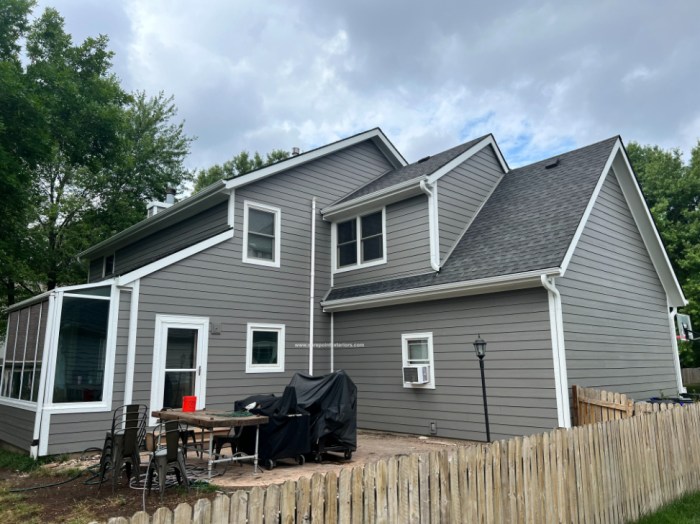
Delving into the world of James Hardie aged pewter, this captivating metal finish offers a unique charm that can transform any home design. From its distinctive color to its versatile texture, aged pewter brings a touch of elegance to architectural styles.
Let's unravel the allure of this timeless material.
Overview of James Hardie Aged Pewter
James Hardie Aged Pewter offers a unique color, texture, and finish that adds depth and sophistication to any home exterior. The color is a warm gray with subtle hints of green and brown, creating a timeless look. The texture is smooth and sleek, adding a modern touch to the design.
The finish is matte, providing a sophisticated appearance that complements various architectural styles.
Popularity and Versatility of Aged Pewter
Aged pewter has gained popularity in home design due to its versatility and ability to blend seamlessly with different architectural styles. Whether used on a traditional colonial home or a contemporary urban dwelling, aged pewter adds a touch of elegance and charm.
Its neutral tone allows for easy pairing with a wide range of colors, making it a versatile choice for homeowners looking to enhance their curb appeal.
Complementing Different Architectural Styles
- Aged pewter pairs beautifully with modern farmhouse architecture, creating a sleek and sophisticated look that contrasts with rustic elements.
- For Mediterranean-style homes, aged pewter adds a touch of understated luxury, complementing the warm tones and intricate details of the design.
- In coastal-inspired homes, aged pewter offers a subtle nod to nautical themes while maintaining a refined and classic appearance.
Installation and Maintenance

When it comes to installing and maintaining James Hardie aged pewter siding, proper care and attention are essential to ensure longevity and preserve its aesthetic appeal.
Installation Guide
- Prepare the surface: Make sure the surface is clean, dry, and free of any debris before starting the installation.
- Measure and cut: Accurately measure the dimensions of the area where the siding will be installed and cut the panels accordingly.
- Install the siding: Begin by installing the starter strip at the bottom of the wall and then work your way up, ensuring each panel is securely attached.
- Overlap and secure: Properly overlap the panels to allow for expansion and contraction, and secure them using the recommended nails or screws.
- Finish and seal: Once all the panels are installed, finish off the edges and corners neatly, and seal any gaps or joints to prevent water infiltration.
Maintenance Tips
- Regular cleaning: Periodically clean the siding with a mild detergent and water to remove dirt, dust, and other debris that can accumulate over time.
- Avoid harsh chemicals: Refrain from using abrasive cleaners or harsh chemicals that can damage the color and finish of the aged pewter siding.
- Inspect for damage: Routinely inspect the siding for any signs of damage, such as cracks or chips, and address them promptly to prevent further deterioration.
- Repainting: If the color starts to fade or wear off, consider repainting the siding with a compatible paint to restore its appearance and protect it from the elements.
Durability and Weather Resistance
When it comes to durability and weather resistance, James Hardie aged pewter siding is a top choice for homeowners looking for long-lasting performance and protection against the elements.Aged pewter siding is engineered to withstand various weather conditions, making it highly durable and resilient.
Here's how aged pewter stands up to different weather elements:
Durability Features of James Hardie Aged Pewter Siding:
- James Hardie aged pewter siding is made of fiber cement, a durable material that is resistant to rotting, warping, and cracking.
- It is also resistant to pests such as termites, ensuring that your siding remains intact and free from damage.
- The color of aged pewter is baked into the fiber cement during the manufacturing process, providing long-lasting color retention and protection against fading.
Weather Resistance of Aged Pewter Siding:
- James Hardie aged pewter siding is designed to withstand extreme temperature changes without expanding or contracting, ensuring its longevity in both hot and cold climates.
- It is also engineered to resist moisture, making it ideal for areas prone to heavy rain or humidity.
- The durability of aged pewter siding makes it highly resistant to wind damage, providing peace of mind during storms and high winds.
Longevity Compared to Other Siding Materials:
- Compared to vinyl siding, which can crack and fade over time, aged pewter siding offers superior durability and longevity.
- Wood siding is susceptible to rotting, warping, and insect damage, while aged pewter siding is resistant to these issues, providing a longer lifespan.
- Fiber cement siding, like aged pewter, is known for its longevity and low maintenance requirements, making it a cost-effective choice for homeowners in the long run.
Cost and Value
When considering the cost and value of James Hardie aged pewter siding, it's essential to look at both the initial investment and the long-term benefits it brings to your home.
Cost Factors
- Material Cost: Aged pewter siding from James Hardie may have a higher upfront cost compared to other siding options, but its durability and low maintenance requirements can lead to cost savings over time.
- Installation Cost: The installation of aged pewter siding may require professional help, which can add to the overall cost. However, the expertise ensures proper installation, maximizing the siding's lifespan.
- Maintenance Cost: Aged pewter siding is known for its low maintenance needs, reducing the cost of upkeep compared to other siding materials that may require frequent painting or repairs.
Value Added
- Curb Appeal: Aged pewter siding adds a sophisticated and timeless look to your home, enhancing its overall curb appeal and making it stand out in the neighborhood.
- Resale Value: Homes with high-quality siding like James Hardie aged pewter tend to have higher resale values due to the durability and aesthetic appeal it offers, attracting potential buyers.
Return on Investment
- ROI Calculation: While the initial cost of aged pewter siding may be higher, the long-term savings on maintenance and the increase in home value can result in a positive return on investment over time.
- Energy Efficiency: Aged pewter siding can also contribute to improved energy efficiency in your home, leading to lower energy bills and further enhancing the ROI.
Concluding Remarks
In conclusion, James Hardie aged pewter emerges as a durable and stylish siding option that enhances the aesthetic appeal of any property. Its weather resistance, easy maintenance, and lasting value make it a top choice for homeowners seeking longevity and beauty in their exterior design.
Explore the possibilities of aged pewter for a lasting impact on your home.
FAQ Explained
Is James Hardie aged pewter suitable for all architectural styles?
Yes, aged pewter's versatility allows it to complement a wide range of architectural designs, from traditional to modern.
How often should I clean aged pewter siding?
Regular cleaning with mild soap and water is recommended to maintain the appearance of aged pewter siding.
Does aged pewter siding require frequent repainting?
No, the color of aged pewter is durable and long-lasting, reducing the need for frequent repainting.
-
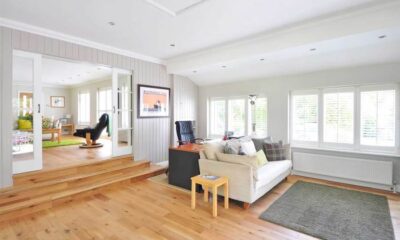
 General6 months ago
General6 months agoSmall Home Renovation Ideas: 5 Creative Ways to Maximize Space
-
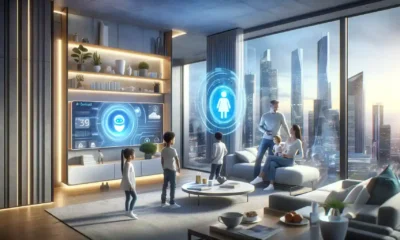
 General8 months ago
General8 months agoAI-powered lifestyle design tools for home planning: Revolutionizing Efficiency and Customization
-
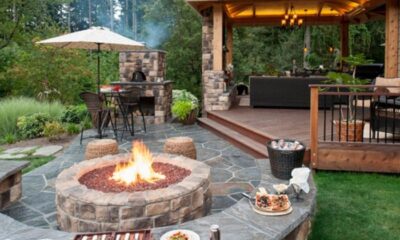
 General6 months ago
General6 months agoCaptivating Fire Pit Patio Design Ideas to Transform Your Outdoor Space
-

 General6 months ago
General6 months agoThe Ultimate Guide to the Best Architectural Rendering Services for High-End Real Estate
-

 General7 months ago
General7 months agoEco-Friendly House Paint Options: A Guide to Sustainable Painting Choices
-
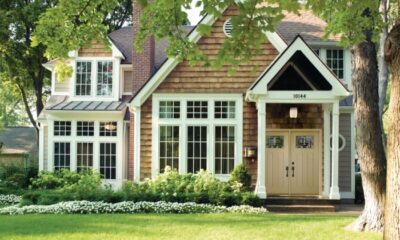
 General7 months ago
General7 months agoCrafting Energy Efficient Home Exteriors: A Guide to Sustainability
-
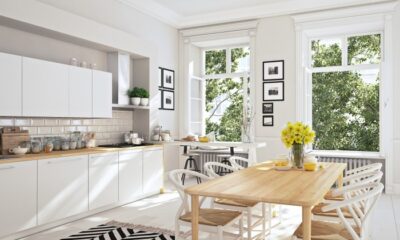
 General7 months ago
General7 months agoCrafting a Timeless Aura: Unveiling the Magic of Scandinavian Interior Design
-

 General6 months ago
General6 months agoHow Smart Technology is Revolutionizing Healthcare






